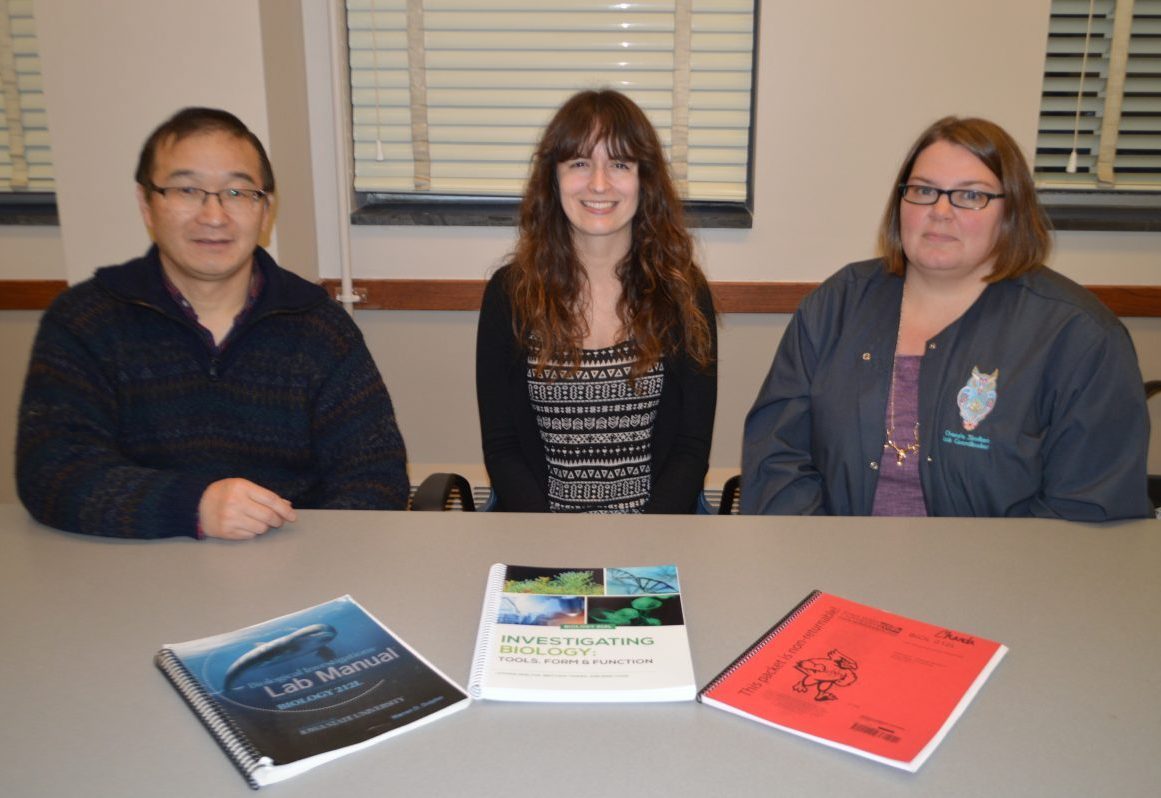
When an Iowa State University team led by Bing Yang, associate professor of genetics, development and cell biology, embarked on a three-year journey to introduce a new manual to students in Principles of Biology Laboratory II, they had two goals. They wanted to eliminate any confusion caused by using two different lab manuals, and they hoped to save students money by reducing the two manuals to one.
The team met both goals with the introduction last year of Biology 212L Investigating Biology: Tools, Form & Function. The new lab manual made it easier for the lab coordinators and teaching assistants to teach the lab and immediately created cost savings for students. Previously, a student paid approximately $125 for the two required lab books. Today, the new manual costs approximately $30.
“The cost savings add up – over $100,000 in an academic year – when you have roughly 350 students in fall and 900 students in spring,” said Chanda Skelton, teaching lab coordinator in ecology, evolution and organismal biology.
Saving students money was “a big encouragement for us to do it,” said Yang, who oversaw the project as the faculty in charge. Skelton and Brittany Tawes, teaching lab associate in ecology, evolution and organismal biology, completed the team.
The team incorporated teaching assistant feedback to make the manual more user-friendly.
“We used suggestions they provided to try to make it better and to fit the way they tend to like to teach the labs,” Skelton said.
Following the fall 2017 introduction of the new manual, the teaching assistants reported undergraduate students seemed more engaged in the material and there was less confusion about assignment and lab information.
Karri Haen Whitmer, senior lecturer in genetics, development and cell biology, is also leading efforts to make course materials more effective and cost efficient for students. She has authored a freely available digital laboratory manual for Fundamentals of Human Physiology Laboratory, which replaced a previous paperback version, saving students $100-150, a total of more than $50,000 last spring semester.
The electronic manual implements course-based undergraduate research in the curriculum. Original assignments in the text teach students applied skills like basic statistics and methods for data visualization, and the lab reports focus on students’ overall understanding of experimental methods in human physiology.
Whitmer, along with Carly Manz, lecturer in genetics, development and cell biology, have also worked with the textbook publisher to implement an inclusive access program for digital text and homework materials for the Fundamentals of Human Anatomy and Fundamentals of Human Physiology lecture courses. This allows for savings of more than $200 per student for the two courses.